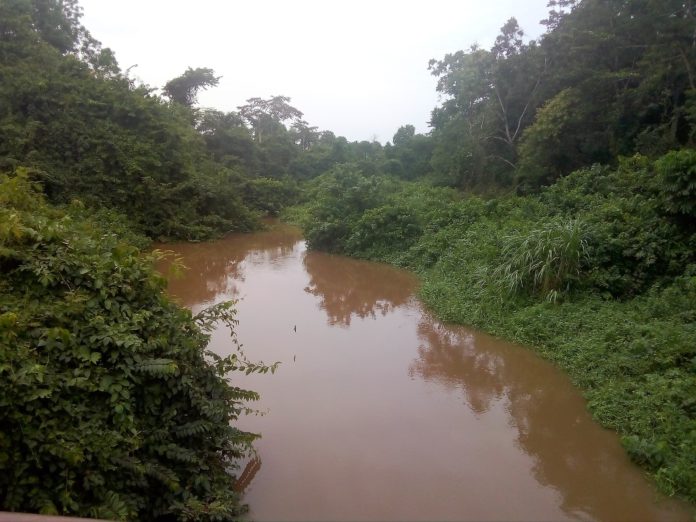The condition of the Tano River is even worse than it was last year, says JoyNews’ Erastus Asare Donkor.
Mr. Asare Donkor who has been monitoring and reporting on the galamsey menace in the country, in a follow-up to an earlier documentary ‘Destruction for Gold’ revealed that his visit to the areas he had covered in the previous documentary, while they have witnessed few galamsey activities in the area are riddled with uncovered pits.
He added that the illegal miners have also transferred their activities further upstream and are causing even more harm.
According to him, at their new locations, some illegal miners were now directly mining in the Tano River contributing to the rising turbidity of the water body.
“When we wanted to now extend our visit to other uncovered areas in the forest and try to gauge what is happening whether indeed – in fact when we went in there we still saw the Tano River still so polluted, in fact, more polluted than we met it last year. And when you see the turbidity levels for the Tano in 2023 it will shock you,” he said on PM Express.
He noted that while previously the illegal mining activities were largely carried out by Ghanaians, this time foreigners, the Chinese, were directly working at the illegal mining sites.
This is in clear contravention of Ghana’s laws in mining.
“The Ghana Water Resources Commission has come out with 2023 turbidity levels and its worse than 2022 that we saw. So we decided to check the Tano to find out what is happening. And so other communities where previously there was no mining we now saw at a place called Boiya and Bena which is along the Samreboi area in the forest there we saw active mining.
“And this time around, it’s been done by the Chinese themselves contrary to mining regulations, because this area is reserved for Ghanaians and the Chinese are not supposed to even be there in the first place let alone drive excavators and be excavating land.
“And so Evans, what we saw was shocking to the extent that we see the alluvial washing bay sitting directly at the edge of the Tano. And so there is that intention, the mens rea to wash directly into the Tano River.”
He said the Tano River which had previously brought life to the forest and towns it snaked through was now dead.
Currently, cases of babies born with congenital, cognitive and other deformities in the areas bordering the Tano River have increased exponentially.
According to a case study carried out by Pathologist, Professor Paul Opoku Sampene Ossei, the exposure of expecting mothers to harmful toxins in the air, in water bodies and through the ingestion of foodstuff cultivated on contaminated lands has led to a rise in birth defects, stillbirths and maternal mortality in affected areas.
“Not only are these children born with cognitive impairments, some of them are born what we call stillbirth, where they die in their mothers’ uteruses or their mother’s uterus. And then some of them will also have to go through what we call spontaneous abortion.
“And then if they’re lucky and they come unto this earth, some of them will have all manner of congenital anomalies such as those that I’ve shown… children with different limbs, limbs about four limbs, some of them having to have eyes that are situated in a funny area around the forehead.
“Some of them will have what we call polydactyl which means that their limbs will have – in fact when we talk about the digitals, the fingers will have maybe six here, six there, another six on the limbs making it 12:12 making it 24 digitals. And then some of them were born, not born, let me say, were delivered without genitals,” he said.

